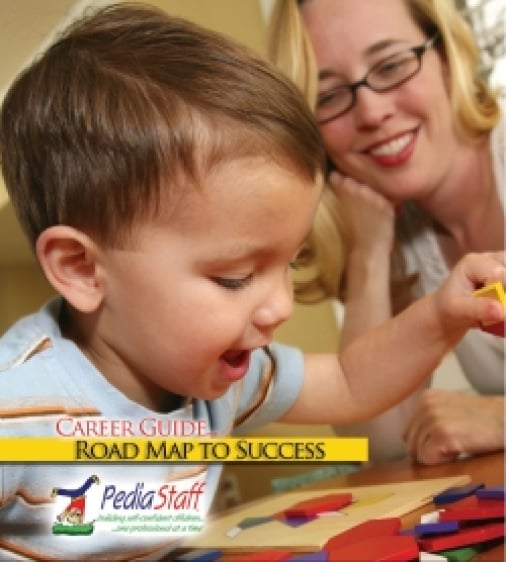OT Corner: Help For the Anxious Child
As pediatric therapists, we’ve all had more than our share of anxious, high arousal children on our caseloads. As one mother commented to me recently, “He’s always seemed as if he’s miswired.”
These are the children who need constant reassurance, who can’t be flexible, who need to know what is coming next and can’t cope with changes in their routine. Their mothers will tell you that it’s a constant balancing act to gauge how much information with which to supply the child about future plans at any given time. If he knows too much about what is going to happen, he tends to become obsessed, asking endless questions, and if he knows too little, he doesn’t have the ability to do the necessary mental preparation in order to be able to shift gears. The anxious child enters the clinic {often after a few minutes of coaxing, although he’s been there many times before} and asks what will happen if the swings fall out of their hooks, if the zip line pulls out of the wall, whether the trampoline will get a hole in it while he is jumping on it. He gets stuck in a loop and can’t believe the grownups when they try to reassure him.
The anxious child treats many everyday activities as if he is experiencing them for the first time. He can’t easily adapt to novelty, and he can’t internalize routine. Long after the beginning of the school year, he enters the classroom and needs adult supervision and guidance to take off his coat, put his backpack in his cubby, and sit down at his desk.
The anxious child isolates himself in the corner, hangs back on the playground, won’t touch the craft materials at school, won’t try new foods, won’t participate in circle time. He hangs on his mother and has a hard time separating from her and diving into the cheerful chaos of the classroom, earning his mother the disapproval of the school’s social workers for making him too dependent on her. He has a very hard time going to sleep and wakes up during the night. At family gatherings he disappoints the relatives because he can’t bring himself to allow the grownups to hug and kiss him or to play with his cousins, preferring to sit in a corner and read a book or engage in some other solitary activity.
Top down strategies {appealing to the child’s intellect to overcome his inability to participate in everyday life} are of little use when a child is chronically anxious. The child can’t talk easily talk himself into doing what the grownups want him to do. The more the grownups try to persuade, the more obstinate he becomes. He can’t intellectually persuade himself that everything is all right. He can’t self regulate or self soothe. He gets jacked up and stays that way, escalating until the inevitable melt down, or he is seen as having a frozen affect, looking like a deer in the headlights. His automatic response to life is a resounding “NO!” and he may come across as perpetually defiant or angry.
Sensory integration therapists are in a unique position to help chronically anxious children by pinpointing and addressing the neurological issues that underlie and drive this kind of behavior.
What causes a child to be anxious? Here are some things we can evaluate and address.
A poorly integrated Moro, or startle response: The Moro reflex is what propels the baby to extend its limbs and take its first big inhalation of air when it emerges from the birth canal. It is present and active in the nervous system for the first few months of life, and then it integrates, meaning it is still present, but does not respond to normal sensory experiences. If it is still active in the child’s nervous system, however, the child’s body will respond to most daily events by startling and flooding him with stress hormones, like adrenaline and cortisol. This tends to keep the child in a chronic fight or flight state.
An active spinal Galant reflex: The spinal Galant reflex causes the hips to wiggle involuntarily when there is any pressure or sensation to the low back. It causes the low back area to be highly sensitive. Children who can’t sit still, who are constantly wriggling or running around in circles, and who complain bitterly about wearing underwear or pants with labels or tight waist bands, may be struggling with a poorly integrated spinal Galant. They also may have difficulty managing their bowel and bladder functions, especially at night.
Tactile defensiveness: The Wilbargers, who developed the Deep Pressure Protocol for tactile defensiveness, said it best: the child continually feels as if he is alone in a dark parking lot at 3am in a bad neighborhood. His skin is continually misinforming him about what is going on around him, putting him on high alert, and telling him that his clothing is too scratchy, classroom materials are disgusting, and other people are threatening his personal safety. I imagine the child feels a little extra crazy since no one else seems to share his perceptions. Oral motor defensiveness, which can be caused by weakness and incoordination in the child’s oral musculature as well as overly sensitive lips, cheeks, and tongue, prevents the child from taking pleasure in his food and makes meal times a trial. If the child’s oral motor coordination is impaired enough, he may have significant issues with controlling the bolus of food in his mouth and be afraid of choking. Olfactory defensiveness makes many smells intolerable.
Auditory defensiveness: I once treated a little boy who was so auditory defensive that he startled and fell off of the suspended equipment every time someone entered the clinic. A child who continually responds to most ambient sound with, “What’s that?” or who can’t function in a noisy environment, is reacting to sounds that our nervous systems would not even register by flooding the child with stress hormones and alerting him out of his focus. An auditory defensive system often can’t properly filter or discriminate relevant auditory information, which means that the child can’t pick out the teacher’s voice from among the others in the classroom. He has to continually look at the other children to get visual cues to see what he should be doing, or risk the teacher’s wrath for not paying attention. The child’s ears are often painful as the muscles and inner structures in the inner ear don’t protect the eardrum properly.
Undetected balance difficulties: impaired equilibrium and protective extension responses, poor joint co-contraction, and poor core stability, caused by delayed postural reflex development: I once evaluated a lovely little boy {who was referred to me for handwriting delay} whose parents reported that he only engaged in sedentary play and that he absolutely refused to participate in either recess or gym class. His teachers were impressed by his work ethic, his politeness, and his intellect, but confounded by his firm insistence on disobeying direct orders to get out there and scrimmage with the rest of his classmates.
On testing, his protective extension responses were completely absent. One soft push to his shoulder sent him falling heavily onto the mat, indicating that his equilibrium responses and joint co-contraction were highly impaired. No wonder he had no interest in running around! He knew he could get seriously hurt if he did. Children who don’t have a strong, sturdy, reliable, stable relationship with gravity are understandably anxious. Fear of falling is hardwired into the human nervous system. Anyone who has ever had to navigate a noisy, busy environment on crutches, or has had vertigo, knows how scary it is to try to cope with impaired balance in public.
Absent or weak optical head righting reflex: Head righting is what maintains posture and head position no matter where the body is in space. I would venture to say that almost all of the children who present with sensory integration issues have impaired righting reactions. If your head is not automatically seeking midline when you move, you are at risk for falling. The head leads the body into movement, and the body always follows. So if the child’s head is not righting and seeking midline, his body is at continual risk for falling. Impaired head righting also affects the child’s vision, because the ability of the eyes to hold a strong, stable gaze is dependent on the presence of the reflex. The eyes don’t have a solid base of support from which to operate, and background images will sometimes shimmer and blur. I imagine if I perceived my world as moving all the time, I would not feel secure in my body, and maybe motion sick as well.
I sometimes see severely autistic children put their hands on walls and floors before entering a room and run them along the surface. It looks to me as if they are trying to determine whether or not the surfaces are solid. I believe it is because the weakness and incoordination in their eyes are causing visual images to undulate.
Inefficient, shallow, rapid respiration: Many children with postural challenges tend to hold themselves upright by fixing their ribcages, which locks up their respiratory mechanisms. Even if you’re not anxious, you can breathe yourself right into a fight or flight state with rapid, shallow breathing.
Addressing these underlying issues will go a long way towards making the child much more available for learning, playing, and socializing. In fact, improving sensory processing and reducing defensiveness and anxiety should be the initial treatment priority in a sensory integration based treatment approach. If a child is continually traumatized by his responses to his environment, addressing the child’s fine motor skills, which are developmentally last to develop, should wait until the child’s anxiety levels have reduced, his neurological functioning has improved, and he has developed sufficient attention, focus, and motivation to engage in fine motor tasks without a fight.
Featured Author: Loren Shlaes, OTR/L
Many thanks to Loren Shlaes for providing us with this article for our newsletter and website.
Loren Shlaes, OTR/L is a pediatric occupational therapist specializing in sensory integration and school related issues, particularly handwriting. She lives and practices in Manhattan. While her blog is no longer active, you can read her archived posts at at http://www.pediatricOT.blogspot.com/
PediaStaff is Hiring!
All JobsPediaStaff hires pediatric and school-based professionals nationwide for contract assignments of 2 to 12 months. We also help clinics, hospitals, schools, and home health agencies to find and hire these professionals directly. We work with Speech-Language Pathologists, Occupational and Physical Therapists, School Psychologists, and others in pediatric therapy and education.

